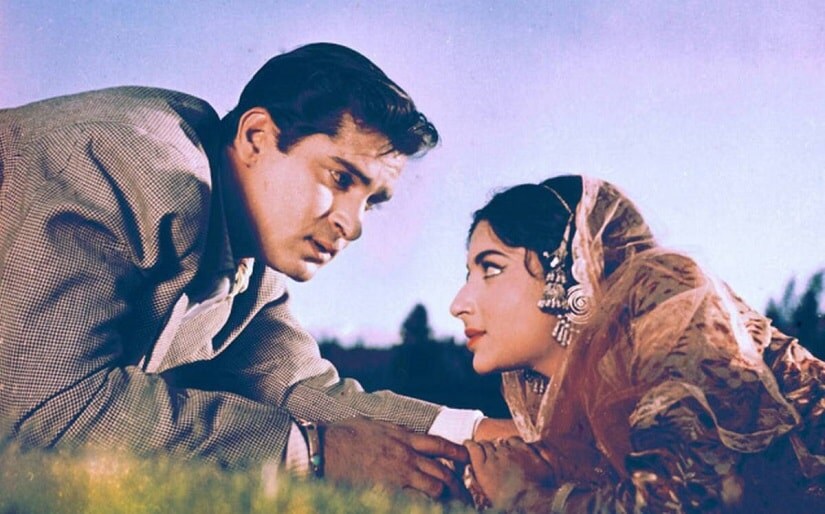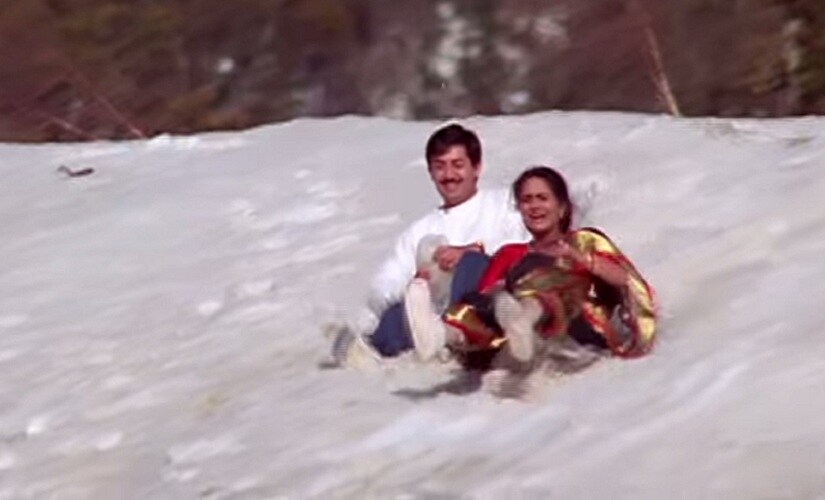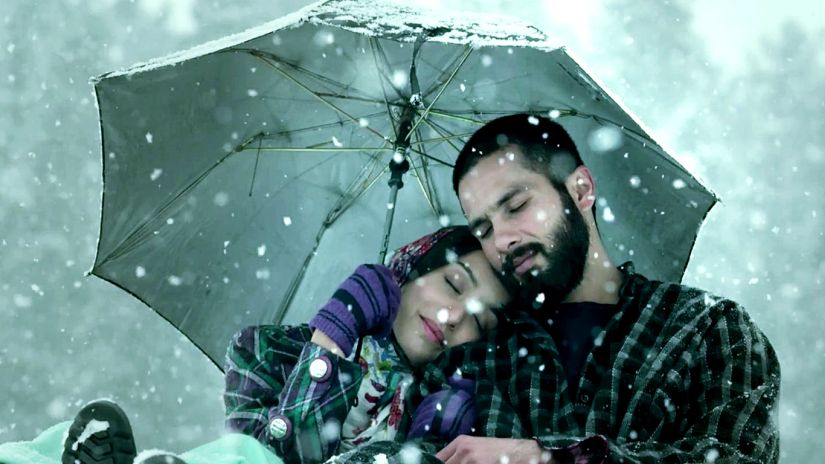**’**Paradise on Earth’ was how our geography textbooks described Jammu and Kashmir. Then there was whatever little we learnt from our films — a picture so pretty that it sometimes seemed unreal. For many of us growing up in the ’80s, the earliest memories of Kashmir were watching Shammi Kapoor films on Doordarshan, huddled up in front of the TV set on a Sunday evening. There was Junglee (1961) where a stuffy young man comes to Kashmir and loses his inhibitions amidst all that beauty, while another fell into the Dal Lake mid-serenade in Kashmir Ki Kali (1964). You would almost be forgiven for thinking a trip to Kashmir was enough to get you punch drunk on love. There were other films, like Jab Jab Phool Khile (1965) and Roti (1974), that etched in one’s mind the picture of a beautiful valley, a veritable fantasy land for those of us growing up in urban India. And then there was Yash Chopra’s love affair with Kashmir that continued for the best part of a decade in the late ’70s and early ’80s, with blockbusters like Kabhi Kabhie (1976), Noorie (1979) and Silsila (1981). [caption id=“attachment_7127511” align=“alignnone” width=“825”]  Shammi Kapoor and Sharmila Tagore in a still from Kashmir Ki Kali[/caption] All of this was before 1988, of course. Bollywood used Kashmir as a catalyst for romance, providing a near-perfect visual treat for audiences looking to escape their lives for three hours. These were not Kashmiri stories though —you would see local representation in the form of shikara owners, herdsmen, house help or tourist guides. When there was a local written into the main storyline, like in Kashmir Ki Kali and Junglee, the story was usually a cliché — rich guy from somewhere lands up in Kashmir and falls in love with a poor local girl. Those were different times though. Bollywood did not represent much beyond its mainstream tropes. The only attempt at telling a ’local’ story up until that point was Noorie. Even there, most Kashmiris will tell you that authenticity was not of paramount importance to the filmmaker. Noorie was a good film but it could as easily have been set in any part of rural India — it tells you nothing about the milieu it is set in. Our filmmakers could not see Kashmir for anything beyond its snow-capped mountains and verdant valleys. When Mani Ratnam dropped Roja on us in 1992, he changed those rules. While Bollywood had become used to exploiting Kashmir for its beauty, Ratnam used the backdrop for its political turmoil, a trope that he used in his next two films, Bombay and Dil Se. While one did not see other filmmakers latch on this theme for all their depictions of Mumbai or the North-East, it pretty much became a definitive theme for any story on Kashmir henceforth. Yes, the situation in Kashmir had changed. The 1990s saw some of the most violent times in the region’s history, but the stereotyping of the people of Kashmir had only just begun. [caption id=“attachment_2893946” align=“alignnone” width=“825”]  A still from Roja[/caption] Films like Mission Kashmir (2000) and Yahaan (2005) both exploit the unrest in the region with slightly exaggerated versions of the truth, because that is just how mainstream Bollywood tells its stories. Vidhu Vinod Chopra, in an interview about Mission Kashmir, said, “It is a film about Kashmiriyat, which is the age-old tradition of religious tolerance and harmony.” But ask most people and they will tell you it is a film about a terrorist. In Shoojit Sircar’s Yahaan, an army officer falls in love with a young Kashmiri girl, but is torn between love and his sense of duty, because her brother is a terrorist. Audiences walked away from these films thinking that every second person in Kashmir was a terrorist, or was harbouring one. It would be unfair to blame the filmmakers here, because stories need to be amped up to make for good cinema and hold an audience’s interest. They would be documentaries otherwise. When the audience is ignorant enough to watch a film or two and look at an entire people through that lens, stereotyping is bound to happen. (This is the same audience that thinks everyone in South India is ‘Madrasi’) [caption id=“attachment_7127581” align=“alignnone” width=“825”]  Hrithik Roshan and Preity Zinta in a still from Mission Kashmir[/caption] It would be two decades after Roja that a mainstream filmmaker would undertake the task of telling a Kashmir story the right way — through the lens of a Kashmiri. Haider (2014), arguably one of Vishal Bhardwaj’s best films, takes an unflinching look at the recent political history of Kashmir. An adaptation of William Shakespeare’s Hamlet, the film is as much about Oedipal love as it is a tragedy tinted with black humour, most of which is generated by the state of affairs for the people living there. Written by Bhardwaj and Kashmiri journalist Basharat Peer, the film is set in the ’90s Kashmir, when death, fear, and violence were an everyday reality. As the state is under a complete communication lockdown, with a heavy military presence on its barb-wired streets and cloaked under an oppressive sense of fear and uncertainty, the film feels more relevant today than ever. [caption id=“attachment_6177671” align=“alignnone” width=“825”]  Shraddha Kapoor and Shahid Kapoor in a still from Haider[/caption] The success of these ‘Kashmir’ films, however, are the collective failing of our film industry as a whole: to not have told all sides of the story; to not have told all kinds of stories; to not look beyond the hackneyed lines of religion, politics, and war. A few indie films have made attempts to tell ‘other’ kinds of stories, notably Santosh Sivan’s Tahaan (2008), Tariq Tapa’s Zero Bridge (2008), Musa Syeed’s Valley of Saints (2012), and even Ashvin Kumar’s documentary Inshallah, Football (2010). It is slice-of-life films, after all, that paint the truest picture of a people. But when have Indie films ever influenced a mainstream narrative? There is a picture of a terrorist pictured in the minds of millions of Indians where a shikara owner used to be. Maybe permanently. The irony that neither is a correct representation is lost on most of us. But then, all of this ceases to matter to people whose daily lives reek of utter hopelessness. All images from Instagram.
Bollywood used Kashmir as a catalyst for romance, providing a near-perfect visual treat for audiences looking to escape their lives for three hours.
Advertisement
End of Article


)
)
)
)
)
)
)
)
)



